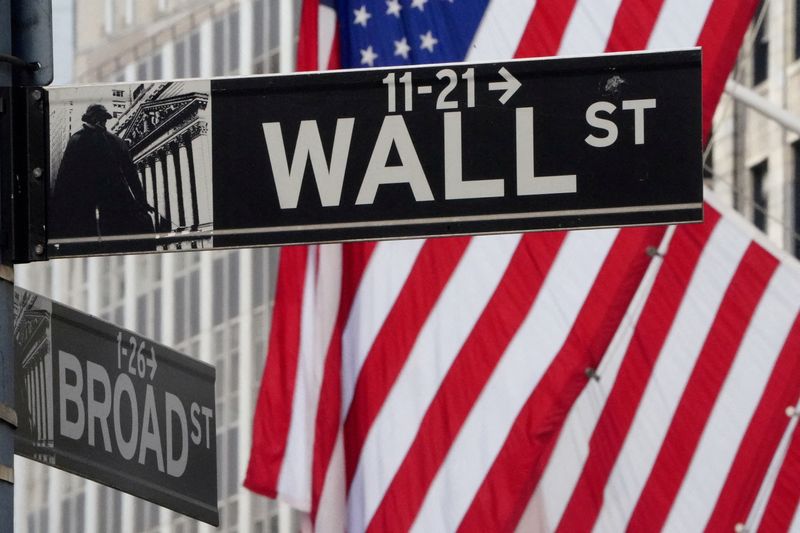By Johann M Cherian and Shristi Achar A
(Reuters) - The benchmark S&P 500 and the Nasdaq rose on Friday after services sector data pointing to a weaker economy raised bets of faster interest-rate cuts this year, hours after robust jobs data doused expectations of rapid easing.
Financial stocks and big tech companies accounted for most of the gains, with Bank of America (NYSE:BAC) and JPMorgan Chase (NYSE:JPM) rising between 0.5% and 2%, while Amazon.com (NASDAQ:AMZN), Nvidia and Microsoft (NASDAQ:MSFT) edged up between 0.7% and 2.7%.
An Institute for Supply Management (ISM) survey showed services sector activity, which accounts for more than two-thirds of the economy, fell to 50.6 in December from 52.7 in the previous month. Economists polled by Reuters had forecast 52.6.
The yield on the benchmark U.S. Treasury 10-year note, reflecting interest rate expectations, pared gains after the data and was last at 3.998%. [US/]
Markets had initially scaled back bets for a March rate cut after a Labor Department report showed U.S. employers hired more workers than expected in December, while raising wages at a solid clip.
Traders now see a 71% chance of at least a 25-basis point cut in March, up from nearly 55% earlier in the day, according to the CME Group's (NASDAQ:CME) FedWatch tool.
"The name of the game with the numbers today is that employment, it's weaker than advertised when you take into account the revisions," said Thomas Hayes, chairman at Great Hill Capital.
"And on ISM non manufacturing data, it came in lower than estimated as well and that keeps the Fed cuts sooner rather than later on the table and that's what the market likes."
Financial stocks led gains among the 11 S&P 500 sectors with a 0.6% advance, notching an over 1-1/2-year high.
The S&P 500 was still on track for its worst weekly performance since late October as investors cashed in after a nine-week winning streak driven by bets that aggressive rate cuts were imminent.
The Nasdaq was on course for its worst week since late September, impacted by rotation out of tech-heavy stocks into defensive sectors like healthcare, financials and utilities.
At 11:53 a.m. ET, the Dow Jones Industrial Average was up 30.49 points, or 0.08%, at 37,470.83, the S&P 500 was up 18.06 points, or 0.39%, at 4,706.74, and the Nasdaq Composite was up 62.57 points, or 0.43%, at 14,572.87.
Applied Therapeutics tumbled 36.8% after the drug developer's heart disease drug showed disappointing results in a late-stage trial.
Palantir Technologies (NYSE:PLTR) lost 2.1% after Jefferies downgraded the data analytics firm to "underperform" on high stock valuations.
Peloton jumped 11.1% after the fitness equipment maker said it will bring its workout content to short-form video platform TikTok in an exclusive partnership.
Later in the day, investors will parse remarks by Richmond Fed President Thomas Barkin, a voting member this year.

Advancing issues outnumbered decliners by a 2.21-to-1 ratio on the NYSE and by a 1.16-to-1 ratio on the Nasdaq.
The S&P index recorded 12 new 52-week highs and no new lows, while the Nasdaq recorded 33 new highs and 52 new lows.